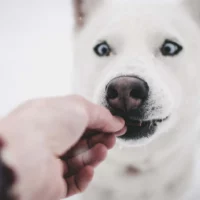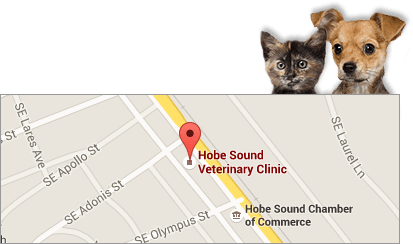With the vibrant colors of fall just around the corner, it’s time for pet owners to take a few extra steps to ensure their furry companions stay safe and happy during this season of change. Just like we humans adjust to the cooler weather and shorter days, our pets also need a bit of extra care during the fall.
Read on as a vet offers up five essential fall safety tips to keep your pets wagging their tails all season long.
Embrace the Sweater Weather
Just like we grab our cozy sweaters to stay warm, our pets can benefit from a little extra insulation too! Some pets, especially those with shorter fur, might feel the chill as the temperatures drop. Invest in a stylish pet sweater or jacket to keep them warm during your outdoor strolls.
And keep in mind that smaller and shorter-haired breeds will likely need a cozy pet sweater or jacket. Just like how we bundle up, they’ll appreciate the extra warmth.
Watch Those Paws
Fall means fallen leaves, and while they may look beautiful, they can hide some hazards for our furry friends. Wet leaves can be slippery, increasing the risk of your pet taking a tumble. Moreover, some leaves might hide sharp objects or even insects. Keep a keen eye on where your pet is walking, and consider wiping their paws when you come back inside to avoid any irritations or discomfort.
Mind the Treats
As the holiday season approaches, it’s tempting to share some of those delicious fall treats with our pets. However, some human foods can be harmful to them. For instance, chocolate and grapes are no-nos for pets. Even some seemingly harmless fall spices like nutmeg can be toxic. Stick to pet-friendly treats and consult your vet before introducing any new foods into your pet’s diet.
Stay Visible
The days will be getting shorter, and darkness sets in earlier. This means that visibility becomes a crucial aspect of keeping your pet safe during your evening walks. Invest in a reflective collar, leash, or even a little vest for your furry friend. Not only will this make them easier to spot, but it will also add an extra layer of protection when you’re out and about.
Our Advice on Fall Safety Tips for Pet Owners in 2024
What specific temperature range should pet owners consider when deciding whether their pet needs a sweater or jacket for outdoor activities?
Pet owners should consider dressing their pets in sweaters or jackets for outdoor activities when temperatures drop below 45 degrees Fahrenheit (7 degrees Celsius). Particularly susceptible are smaller, shorter-haired, and older pets or those with medical conditions that impair temperature regulation. This threshold may vary based on the breed’s adaptability to cold; for instance, breeds originally from colder climates might tolerate lower temperatures better. Always monitor your pet for discomfort and adjust their clothing as needed to ensure they remain warm and comfortable during colder fall and winter outings.
Are there any particular breeds or types of pets that are more susceptible to cold weather?
Certain breeds and types of pets are indeed more susceptible to cold weather. Small breeds like Chihuahuas and toy poodles, short-haired dogs such as greyhounds, and very lean breeds like whippets lack the natural insulation needed to cope with colder temperatures. Additionally, pets with a lower body fat percentage or those suffering from health conditions that impair metabolism, like hypothyroidism, may struggle to maintain body heat. Senior pets and puppies, whose thermoregulation capabilities are not as robust, are also at a higher risk in cold weather.
How can pet owners determine the appropriate size and fit for a pet sweater or jacket?
To determine the appropriate size and fit for a pet sweater or jacket, pet owners should measure their pet’s neck, torso, and length from neck to tail base. Ensure the clothing is snug enough to stay on without shifting but loose enough to allow comfortable movement. Check that it doesn’t restrict breathing or cause discomfort, especially under the arms. Opt for adjustable closures to accommodate slight size variations. It’s important to try the garment on the pet and observe their movement to ensure they are comfortable and unrestricted.
Are there any fall-specific health concerns that pet owners should be aware of?
During the fall, pet owners should be aware of several health concerns. Cooler temperatures can exacerbate arthritis in older pets, requiring more attention to their comfort and mobility. The presence of ticks and fleas still persists in many areas, so continued parasite prevention is necessary. Additionally, the increased use of rodenticides and antifreeze as the weather cools poses poisoning risks; these substances should be kept out of reach. Lastly, seasonal allergies triggered by mold and decaying leaves can cause discomfort and require monitoring.
What should pet owners do if they suspect their pet has ingested a potentially harmful substance?
If pet owners suspect their pet has ingested a potentially harmful substance, they should act immediately. First, safely remove any remaining substance from the pet’s reach. Do not induce vomiting unless instructed by a professional. Quickly gather information about the substance ingested, including the amount and timing. Contact a veterinarian or an emergency pet poison control center promptly to get specific advice and treatment directions. Prompt action can be critical, so having emergency contact numbers readily available and bringing the substance packaging to the vet can aid in swift treatment.
If you have more questions or wish to schedule your furry companion for a wellness checkup, please don’t hesitate to call us, your local vet in Hobe Sound, FL, anytime!




